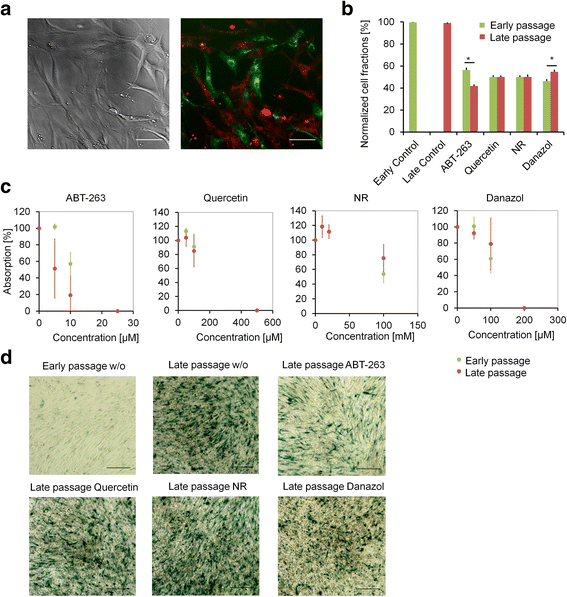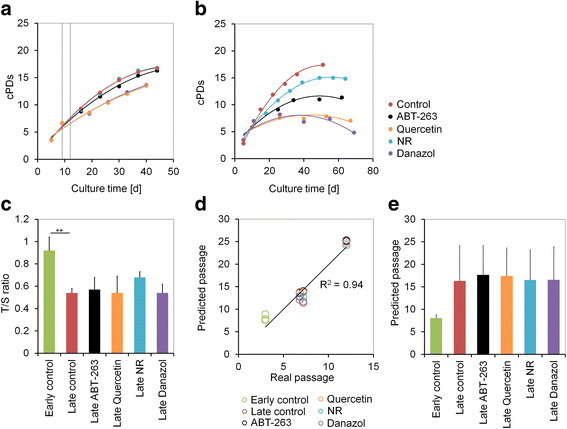Effects of senolytic drugs on human mesenchymal stromal cells
- PMID: 29669575
- PMCID: PMC5907463
- DOI: 10.1186/s13287-018-0857-6
Effects of senolytic drugs on human mesenchymal stromal cells
Abstract
Background: Senolytic drugs are thought to target senescent cells and might thereby rejuvenate tissues. In fact, such compounds were suggested to increase health and lifespan in various murine aging models. So far, effects of senolytic drugs have not been analysed during replicative senescence of human mesenchymal stromal cells (MSCs).
Methods: In this study, we tested four potentially senolytic drugs: ABT-263 (navitoclax), quercetin, nicotinamide riboside, and danazol. The effects of these compounds were analysed during long-term expansion of MSCs, until replicative senescence. Furthermore, we determined the effect on molecular markers for replicative senescence, such as senescence-associated beta-galactosidase staining (SA-β-gal), telomere attrition, and senescence-associated DNA methylation changes.
Results: Co-culture experiments of fluorescently labelled early and late passages revealed that particularly ABT-263 had a significant but moderate senolytic effect. This was in line with reduced SA-β-gal staining in senescent MSCs upon treatment with ABT-263. However, none of the drugs had significant effects on the maximum number of population doublings, telomere length, or epigenetic senescence predictions.
Conclusions: Of the four tested drugs, only ABT-263 revealed a senolytic effect in human MSCs-and even treatment with this compound did not rejuvenate MSCs with regard to telomere length or epigenetic senescence signature. It will be important to identify more potent senolytic drugs to meet the high hopes for regenerative medicine.
Keywords: ABT-263; DNA methylation; Danazol; Mesenchymal stromal cells; Nicotinamide riboside; Quercetin; Senescence; Senolytic drugs; Telomere attrition.
Conflict of interest statement
Ethics approval and consent to participate
Mesenchymal stromal cells were isolated from the femoral bone marrow of three donors after orthopaedic surgery. All samples were taken after informed and written consent and the study was approved by the ethics committee of RWTH Aachen University Medical School (permit number: EK300/13).
Competing interests
RWTH Aachen Medical School has applied for a patent for the Epigenetic-Senescence-Signature. WW is cofounder of Cygenia GmbH that can provide services for this assay (
Publisher’s Note
Springer Nature remains neutral with regard to jurisdictional claims in published maps and institutional affiliations.
Figures


References
Publication types
MeSH terms
LinkOut - more resources
Full Text Sources
Other Literature Sources
Molecular Biology Databases

